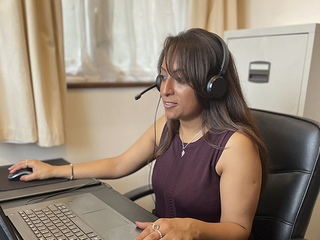Understanding LGLL
Large granular lymphocytic leukaemia (LGLL) is a type of blood cancer that affects your white blood cells. Most types of LGL leukaemia develop slowly over time (chronic LGLL), but it can sometimes develop quickly (aggressive LGLL).
What is leukaemia?
Leukaemia is a type of blood cancer that affects your white blood cells, which are part of your immune system.
Your body makes new blood cells all the time, which you need to stay healthy. Blood cells are made inside the bone marrow, which is a soft spongy tissue found in the middle of some bones. There are different types of blood cell, and they all have different jobs in the body:
- Red blood cells transport oxygen around the body
- White blood cells (including cells called lymphocytes) defend the body from infections, viruses and other foreign substances
- Platelets help your blood to clot, to stop or prevent bleeding
When you have leukaemia, the body produces abnormal blood cells which don’t work properly.
There are different types of leukaemia depending on which cells are affected, and it can develop rapidly (known as aggressive or acute) or slowly over time (chronic).
What is LGLL?
LGLL is a type of leukaemia that affects your lymphocytes, which are type of white blood cell. Lymphocytes play an important role in the body’s immune system.
About lymphocytes
There are three types of lymphocytes:
- B-cell lymphocytes, which produce antibodies to help your body attack invading viruses
- T-cell lymphocytes, which attack infected cells tagged by B lymphocytes
- Natural killer (NK) cells, which destroy tumour cells or cells that have been infected
When the body detects an invader (such as a virus), B-cell, T-cell, and NK lymphocytes are activated to help the body fight off the virus.
Lymphocytes in LGLL
In LGLL, certain lymphocytes become abnormal and start to overproduce. The excess number of lymphocytes then begin to build up in the bone marrow, leaving little space for healthy blood cells to be produced. Having low levels of healthy blood cells, and lymphocytes that don’t work properly, can eventually start to cause symptoms of leukaemia.
Subtypes of LGLL
LGLL happens when the body makes abnormal lymphocytes. There are different subtypes of LGLL, depending on which types of lymphocytes are abnormal.
In most cases of LGLL, it is the T-cell lymphocytes that are abnormal, causing chronic T-LGLL. Sometimes it is the natural killer cells that are abnormal, causing chronic NK-LGLL or aggressive NK-LGLL.
LGLL can develop slowly (chronic) or quickly (aggressive). It is much more common to have a chronic form of LGLL.
- Around 85% of people with LGLL have chronic T-LGLL
- Around 10% have chronic NK-LGLL
- Around 5% have aggressive NK-LGLL
- A handful of people are known to have had an aggressive form of T-LGLL
In both chronic and aggressive LGLL, the condition cannot be cured. However, people with chronic LGLL usually respond well to treatment, and some don’t need treatment for many years. Many people with chronic LGLL live a relatively normal life while managing their condition. Aggressive LGLL is unfortunately more difficult to treat.

Worried about anything or have questions?
If you need someone to talk to, please don't hesitate to contact our Support Service by phone or email.
